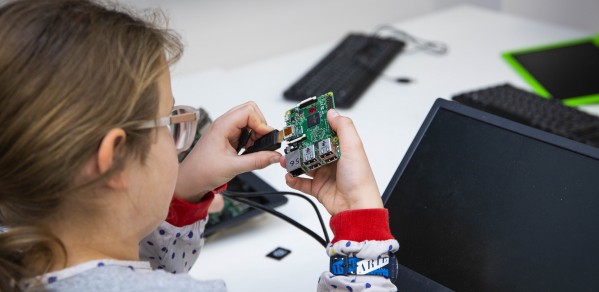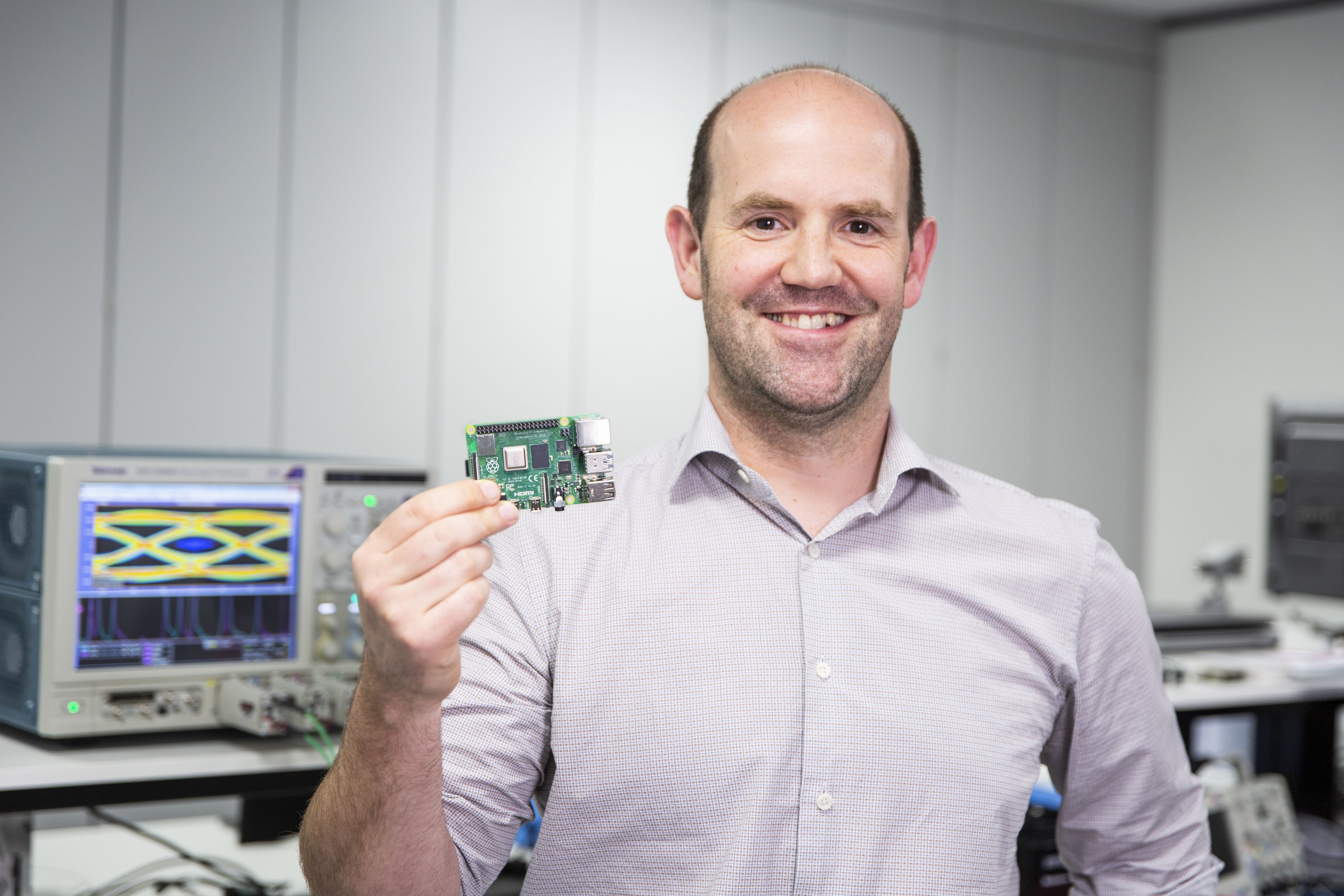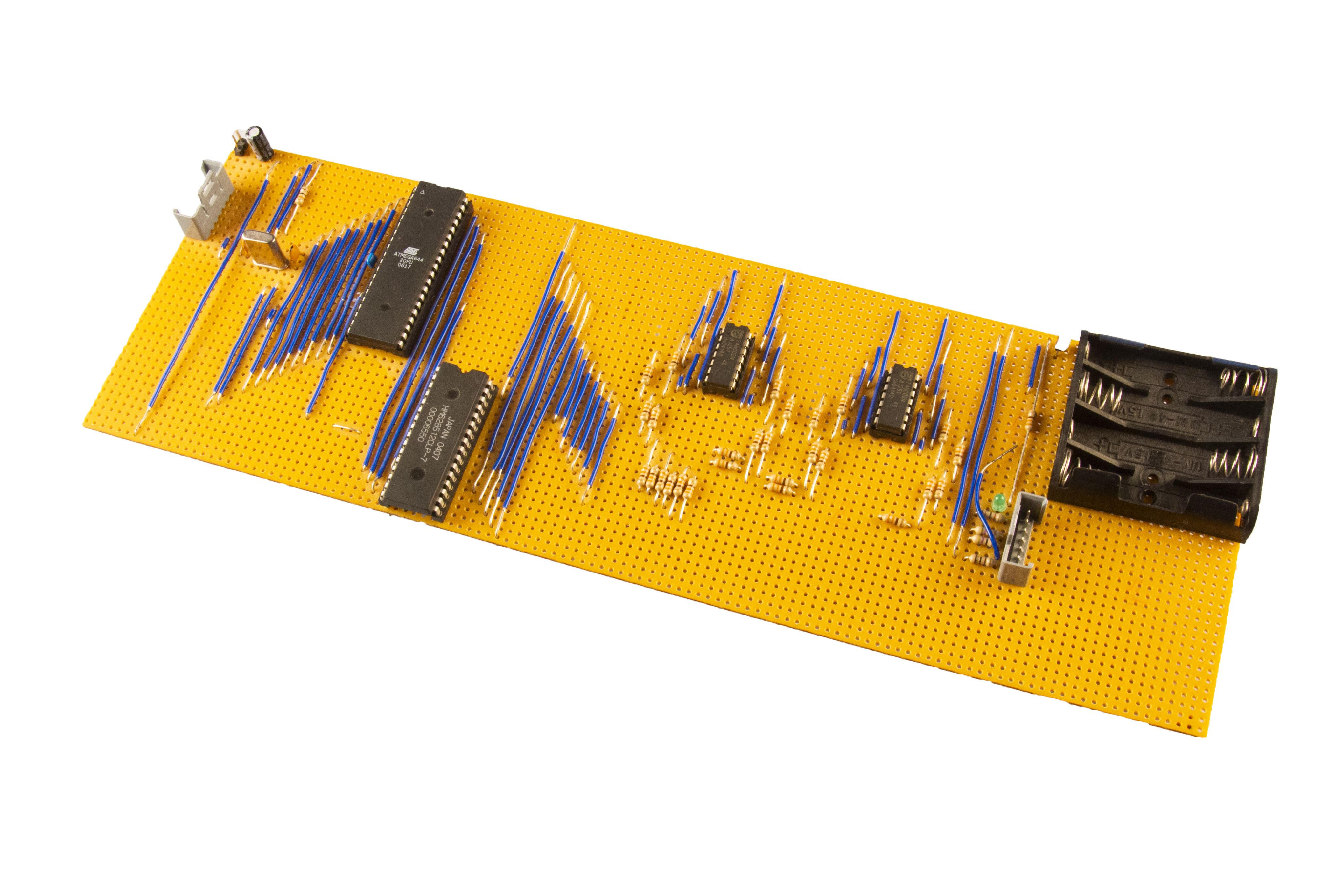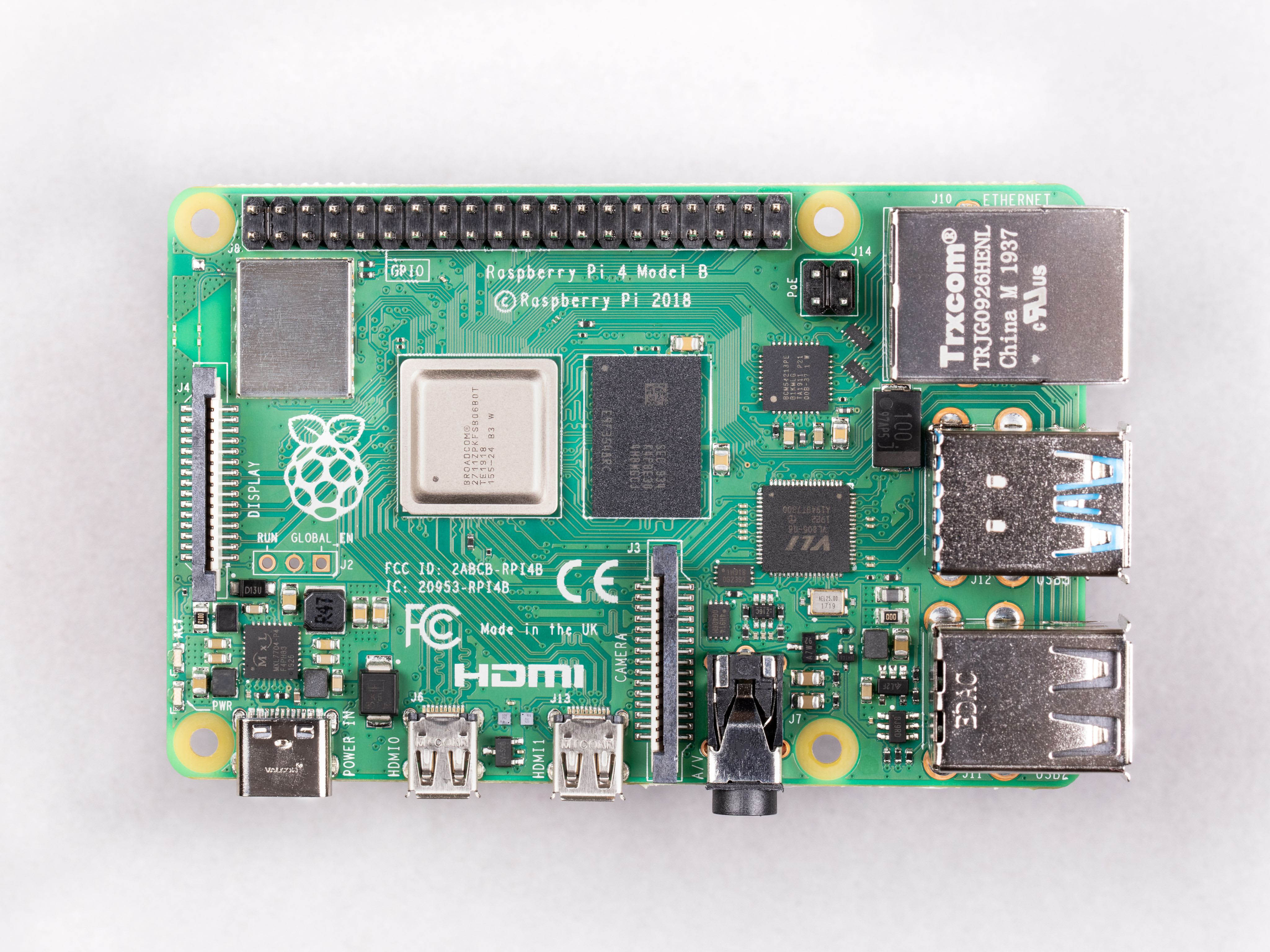
The most successful computer ever to come out of the UK celebrates its tenth anniversary this year.
“People saw that it was stable and capable, which made it ideal for all kinds of applications. Raspberry Pi is now so much more than a fun way for young people to learn how to code. It’s reliable and robust – if you bought one of the original Raspberry Pis back in 2012, it will still work with the 2022 operating system. That longevity is important for industrial applications.”
Roger Thornton, Raspberry Pi’s Director of Applications
Which is a more brutal environment – a large factory or a child’s bedroom? And what does one have to do with the other?
When Eben Upton, co-founder of Raspberry Pi and a University of Cambridge alumnus, was thinking about what he wanted an ultra-low-cost computer to be, one of the key requirements was that it be durable: able to withstand being tossed into a backpack hundreds of times.
Now, more than a decade later, a computer that was designed in part to withstand the rough and tumble of childhood has also found a home in tens of thousands of industrial applications throughout the world, representing around 40% of its annual sales.
Raspberry Pi has created a whole new class of computing device, transforming the way engineers design control systems in industry, and has become a standard component of intelligent interfacing. Its adaptability, stability and low price make it ideal for applications including electric vehicle charging, Internet of Things (IoT), or retrofitting factory machinery so that it can be monitored digitally to spot faults that can slow down production.
Today, the $35 credit-card-sized device is the best-selling computer to come out of the UK. The Raspberry Pi has also created over 300 jobs, both at the Sony Europe B.V.’s Factory in Pencoed, Wales, where it’s manufactured, and at the Raspberry Pi Foundation, a charity based in Cambridge that promotes the study of basic computer science in schools.
Ten years after the first Raspberry Pi was shipped in 2012, more than 40 million of the devices have been sold worldwide, creating a market worth in excess of $1 billion, plus more in peripherals.
Raspberry Pi wasn’t invented to boost shareholder value or turn its founders into billionaires: it was created as a charity to increase the number and calibre of students applying to study computer science at Cambridge, to give young people access to programmable hardware at a low price, and to equip a new generation with the coding skills that are so important in today’s economy. All profits are returned to the Raspberry Pi Foundation to support its educational programmes worldwide.
Raspberry Pi has helped kick-start a renewed interest in coding for young people through the development of online resources, coding clubs, programmes and competitions, which have reached millions of people from more than 100 countries. It runs two large networks of after-school clubs: CoderDojo and Code Club, and produces a range of online resources to support self-directed learning around the world.
The Raspberry Pi Foundation is part of a consortium — together with STEM Learning and BCS, The Chartered Institute for IT — that is running the National Centre for Computing Education in England. This is a government-funded initiative providing comprehensive support for schools and colleges in England to offer a world-leading computing education, from Key Stage 1 through to A level.
Through the National Centre for Computing Education, Raspberry Pi is supporting teachers by providing an extensive range of professional development and certification, bursaries for training, curriculum and teaching resources, community support, and more. To date, the consortium has supported more than 26,000 teachers from over 12,000 primary and secondary schools in England.
“Given how far we’ve come, it’s sort of funny to remember how parochial our ambitions were at the start,” said Upton, who was a Director of Studies at St John’s College after completing his PhD at the Department of Computer Science and Technology in 2006.
“There was a massive decline in the number of people applying to study computer science, which was sort of heart-breaking in a place like Cambridge, with its incredibly rich computing heritage. There was a feeling that if we could get a program or a piece of hardware into the hands of young people at the right point in their lives, we might be able to do something to reverse that decline.”
 Eben Upton, Raspberry Pi co-founder
Eben Upton, Raspberry Pi co-founder
Upton grew up with a BBC Micro: one of the two great Cambridge-designed computers of the 1980s (the second being the Sinclair Spectrum) that taught a whole generation of UK computer hobbyists how to code. The BBC Micro not only sparked Upton’s love of programming, but made him into a major enthusiast for low-cost computing which young people could own for themselves.
“There were lots of conversations going around at the time, that we should remake the BBC Micro, that it might be an answer to get young people interested in coding,” said Upton, who is also an Executive MBA graduate of Cambridge Judge Business School. “We thought if anyone was going to do it, it should be Cambridge.”
Designing a low-cost, high-functioning computer required expertise in technology, trends, education and manufacturing. The team - including Professors Robert Mullins and Alan Mycroft from Cambridge's Department of Computer Science and Technology, Cambridge serial entrepreneur and business angel Jack Lang, as well as other Cambridge computer scientists, engineers, and manufacturing entrepreneurs - came up with four interlocking requirements that the Raspberry Pi had to meet.
 Raspberry Pi prototype.
Raspberry Pi prototype.
The first was that it should be a programmable piece of hardware. The second was that it should be fun: children in the 1980s might have become interested in computers because of games, but the nature of computers at the time meant that many of them got into programming almost by accident. The Raspberry Pi had to have that same degree of fun to it and be able to do all of the things that young people might expect from a PC.
The third requirement was affordability: the team settled on a price point of $25, partly because that was roughly the cost of a textbook, and it was low enough that most families could afford it, and schools would be able to subsidise the small number of families who couldn’t.
The last requirement was robustness. “We really wanted children to have their own Raspberry Pi, and that meant it had to withstand being put in a school bag and taken out a thousand times,” said Upton.
“People saw that it was stable and capable, which made it ideal for all kinds of applications,” said Roger Thornton, Raspberry Pi’s Director of Applications. “Raspberry Pi is now so much more than a fun way for young people to learn how to code. It’s reliable and robust – if you bought one of the original Raspberry Pis back in 2012, it will still work with the 2022 operating system. That longevity is important for industrial applications.”
From the design of the first prototype in 2006 to 2011, the team worked to satisfy the four requirements. Before the Raspberry Pi, no one had produced a low-cost computer that could run an operating system like Linux. The aims of the project were highly democratic: the team wanted to make ownership of an accessible and low-cost device available to all, which in turn would open up the world of programming to people from different ages and backgrounds.
The team’s design was eventually realised with just three chips. With the addition of a low-cost keyboard and a TV for display, it can act as a fully functional programmable computer. It can also be networked and used in groups for more advanced students or for industrial use.
The Raspberry Pi launched in 2012. In 2013, it won the INDEX Design Award, and in 2017, it won the Royal Academy of Engineering’s MacRobert Award, the UK’s longest-running prize for engineering innovation.

 Raspberry Pi 4
Raspberry Pi 4
At first, Raspberry Pi was manufactured in China, but production was moved to Sony Europe B.V.’s UK Technology Centre (Sony UK TEC) at Pencoed in south Wales in 2012. “The intention was always to make it in the UK,” said Thornton. “We can easily visit the factory and understand what’s going on there, which has been especially useful during the pandemic.”
Almost all of the actual manufacturing of Raspberry Pi is automated: the people who work in the factory mostly monitor and look after the machines. “This automated approach means that Wales is the most cost-effective place in the world to make a Raspberry Pi, with improved throughput and quality,” said Thornton. “We’ve brought good-paying jobs to the UK, while still producing the low-cost computer that was our original vision.”
“We knew from the start that keeping the cost of manufacturing as low as possible was imperative,” said Sony UK TEC Managing Director Steve Dalton OBE. “This is indeed a challenge with no simple or one-off solution.
“Finding ways to make our process more efficient today than it was the day before and exploring every aspect of our processes – from small changes in the day-to-day, to major automation projects – allows us to maintain a low manufacturing cost while continuing to grow our team.”
“Raspberry Pi is a British product, created by British engineers, that has found a huge global market,” said Upton. “South Wales has a long tradition of manufacturing, and we are pleased that the success of Raspberry Pi has secured new, skilled jobs in the area. Global success can be transformative within local communities, and we’re proud to be part of that here in Pencoed.”
Another unique aspect of the Raspberry Pi model is that it was set up as a charity: the Raspberry Pi Foundation. “Being set up as a non-profit means we had a different set of drivers than a for-profit company: maybe that’s encouraged us to go harder than we might have done if we’d had a narrow focus on short-term profitability,” said Upton. “But because of the success of the product and the business, the Raspberry Pi Foundation has been able to pursue a range of activities beyond anything we first imagined.”
As it enters its second decade, Raspberry Pi is now making and designing its own chips and microcontrollers, in addition to computers, opening up a whole new range of potential applications.
Raspberry Pi is part of a coalition that’s delivered curriculum reform, teacher training reform, and a revival in hobbyist computing, to numbers beyond the 1980s. The young coders of the 2010s and 2020s however, are far more diverse in terms of gender, ethnicity, background and geography.
“Back in 2007, we felt a little bit like a voice in the wilderness, but we were far from the only people to perceive the gaps in computer education,” said Upton. “By the time we really started deploying Raspberry Pi at scale in 2012, there were a lot of other organisations doing the same thing, and that’s been a great thing to see.”
And what of the team’s original goal: to attract more students to study computer science at Cambridge? From the time that Upton and the team started working on the Raspberry Pi to the tenth anniversary of its launch, the number of undergraduate students applying to Cambridge’s undergraduate computer science course has increased eight-fold, from a low point of around 200 applicants in 2007 to more than 1,600 in 2021.
“It's not something Raspberry Pi can claim full or even the majority of responsibility for,” said Upton. “But it's been wonderful to be part of a community and a coalition that's been able to deliver that kind of change over the course of a decade.”
All images courtesy of Raspberry Pi. Special thanks to Rachel Gardner.

